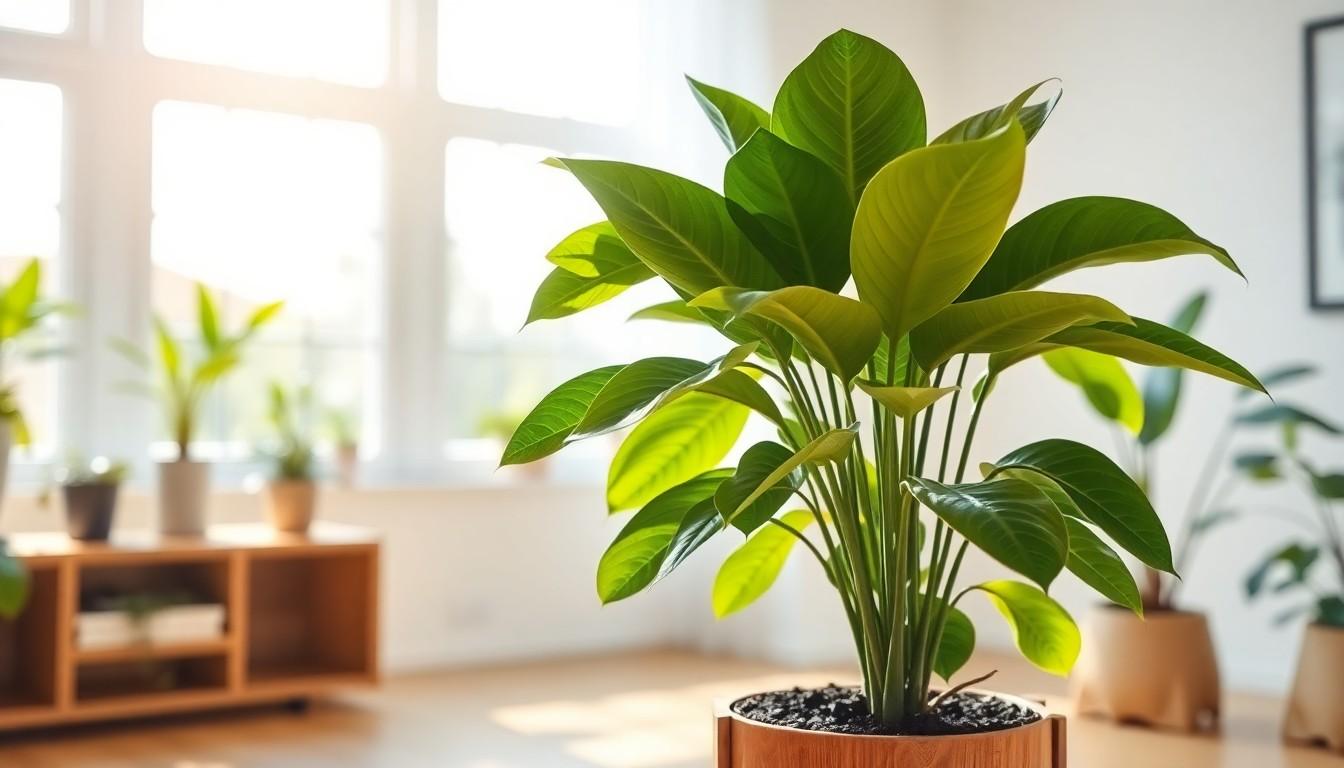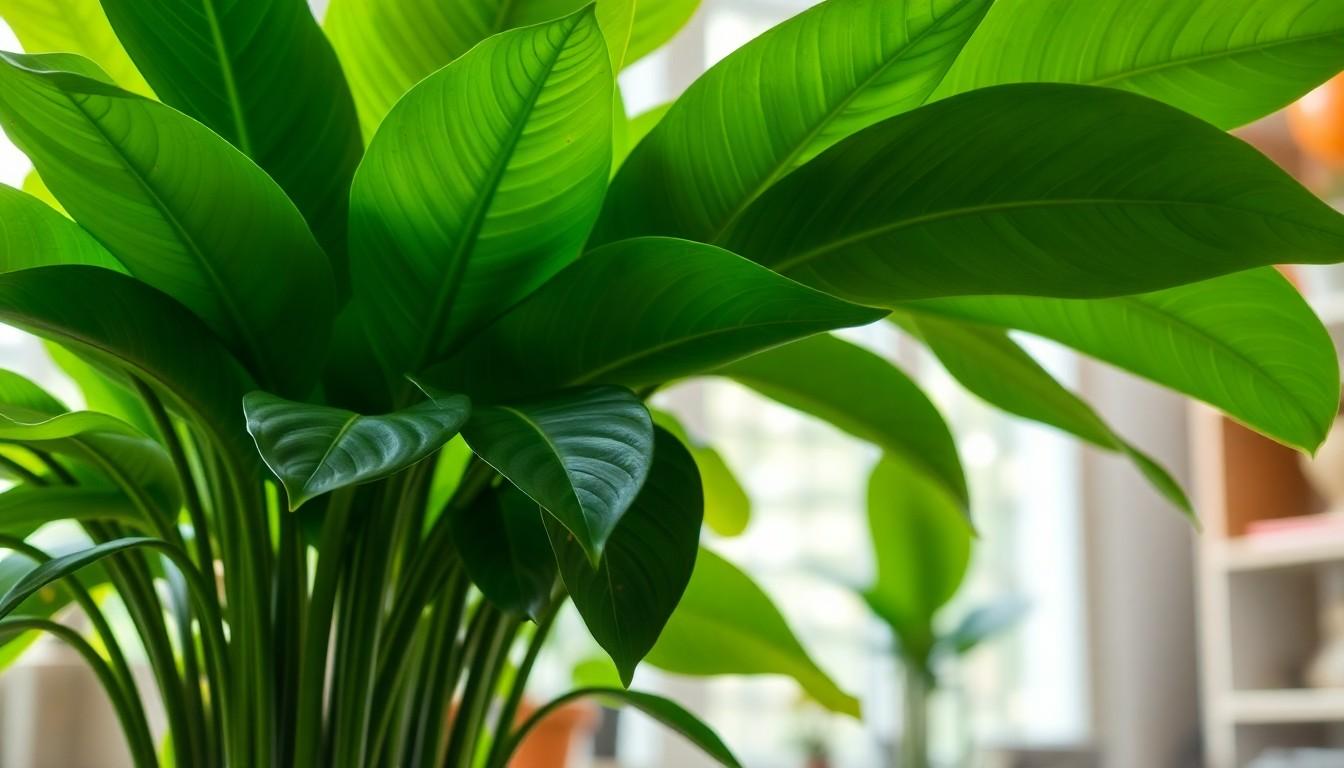Physical Address
304 North Cardinal St.
Dorchester Center, MA 02124

Rubber plants are the ultimate houseguests—stylish, low-maintenance, and always ready to brighten up a room. But just like that friend who shows up uninvited to your dinner party, they can bring along some unwanted surprises. Rubber plant diseases can sneak in and wreak havoc on these beloved green companions, turning vibrant leaves into sad, droopy reminders of what once was.
Understanding these pesky plant ailments is crucial for any rubber plant parent. From fungal infections to pest infestations, knowing how to spot the signs can save your plant from a tragic fate. So grab your gardening gloves and let’s dive into the world of rubber plant diseases. After all, a healthy plant is a happy plant, and who wouldn’t want that?
Rubber plants can encounter various diseases that impact their health. Fungal infections commonly affect rubber plants, leading to leaf spots and blight. These infections often occur in damp conditions or when overwatering occurs.
Bacterial diseases also pose a threat. Instances of bacterial leaf spot present as dark, water-soaked spots on leaves. Applying proper sanitation methods helps prevent bacterial spread and ensures plant health.
Pests can contribute to disease issues. Spider mites and mealybugs weaken rubber plants, making them susceptible to infections. Identifying these pests early is crucial for effective management.
Root rot frequently affects rubber plants when soil drainage isn’t adequate. Leaves may yellow and drop as roots start to decay. Ensuring well-draining soil reduces the risk of this disease significantly.
Nutritional deficiencies can lead to disease-like symptoms. Symptoms may include yellowing leaves or poor growth despite proper care. Regularly checking soil nutrients ensures that rubber plants receive essential minerals.
Rely on proper watering techniques to maintain rubber plant health. Overwatering and underwatering both can cause stress, making plants more vulnerable to diseases.
Observe plants consistently for any signs of distress. Immediate action can often prevent severe damage and maintain overall vigor. Recognizing the early stages of these diseases ensures healthier, thriving rubber plants.

Rubber plants face various diseases that can hinder their growth and vitality. Identifying and addressing these issues promptly is crucial for maintaining plant health.
Leaf spot diseases often arise from fungal infections. Infected leaves develop circular spots that vary in color from brown to black. These spots may expand over time, leading to leaf yellowing and eventual drop. Maintaining good air circulation around the plants helps reduce humidity, which discourages fungal growth. Regularly inspecting leaves for early signs of infection allows for prompt intervention, such as removing affected leaves or applying fungicides.
Root rot issues occur due to overwatering and poor drainage. Soil that retains excess moisture creates an environment for fungal pathogens to thrive, causing roots to rot. Symptoms include yellowing leaves and stunted growth. Checking soil moisture before watering provides a crucial safeguard against root rot. Choosing well-draining soil and pots with drainage holes ensures healthy root development and reduces water retention.
Powdery mildew appears as a white, powdery coating on leaves and stems. This fungal disease thrives in warm, dry conditions with poor air circulation. It may cause leaves to curl and distort, compromising the rubber plant’s appearance. Adequate spacing between plants promotes airflow and minimizes humidity. Applying fungicides or a mixture of water and baking soda can effectively combat powdery mildew when detected early.
Rubber plants can suffer from various diseases linked to environmental factors and pest infestations. Understanding these causes and their symptoms aids in maintaining plant health.
Excessive moisture contributes significantly to root rot in rubber plants. This issue causes yellowing leaves and premature leaf drop. Inadequate drainage exacerbates problems, leading to waterlogged soil. Conversely, low humidity results in leaf curling and brown tips, indicating stress. Poor lighting can also trigger symptoms such as leggy growth and leaf drop. Each factor needs addressing to prevent further complications. Maintaining proper soil conditions ensures robust plant health.
Common pests like spider mites and mealybugs weaken rubber plants. Symptoms might include stippling on leaves or the presence of white, cotton-like masses. These pests feed on plant sap, leading to decreased vitality. Act quickly by isolating affected plants to prevent spreading. Regular inspections and cleaning leaves help detect infestations early. Applying insecticidal soap or neem oil offers effective treatment solutions. Knowing what to look for makes identifying and managing infestations easier.
Preventing and managing rubber plant diseases involves a combination of cultural practices and chemical treatments. It’s vital to address the conditions that promote plant health.
Maintaining optimal growing conditions remains crucial. Regularly check soil moisture and ensure proper watering to avoid root rot. Well-draining soil supports healthy root systems. Providing enough humidity keeps plants robust against environmental stressors. Pruning affected leaves prevents the spread of infection. Ensuring good air circulation helps reduce the risk of fungal diseases. Inspecting plants often allows for early detection of issues. Using clean tools during plant care minimizes disease transmission. Positioning plants in bright, but indirect light promotes healthy growth and reduces susceptibility to diseases.
Applying chemical treatments may become necessary if cultural practices fail. Fungicides can effectively combat fungal infections like powdery mildew. Neem oil serves as a natural pesticide, targeting pests such as spider mites and mealybugs. Systemic insecticides can help manage severe infestations. Following label instructions ensures safe and effective application. Monitoring for signs of disease helps determine the right timing for treatments. Repeating applications as needed maintains protection against recurring issues. Always prioritizing integrated pest management strategies fosters long-term plant health and resilience.
Maintaining the health of rubber plants requires vigilance and proactive care. By understanding the common diseases and pests that can afflict these popular houseplants, owners can take steps to prevent serious issues. Regular inspections and attention to environmental conditions play a critical role in keeping rubber plants thriving.
Implementing good cultural practices such as proper watering techniques and ensuring adequate air circulation can significantly reduce the risk of disease. When problems arise, early identification and intervention are key to preserving the plant’s vitality. With the right care and attention, rubber plants can continue to enhance indoor spaces with their beauty and resilience.